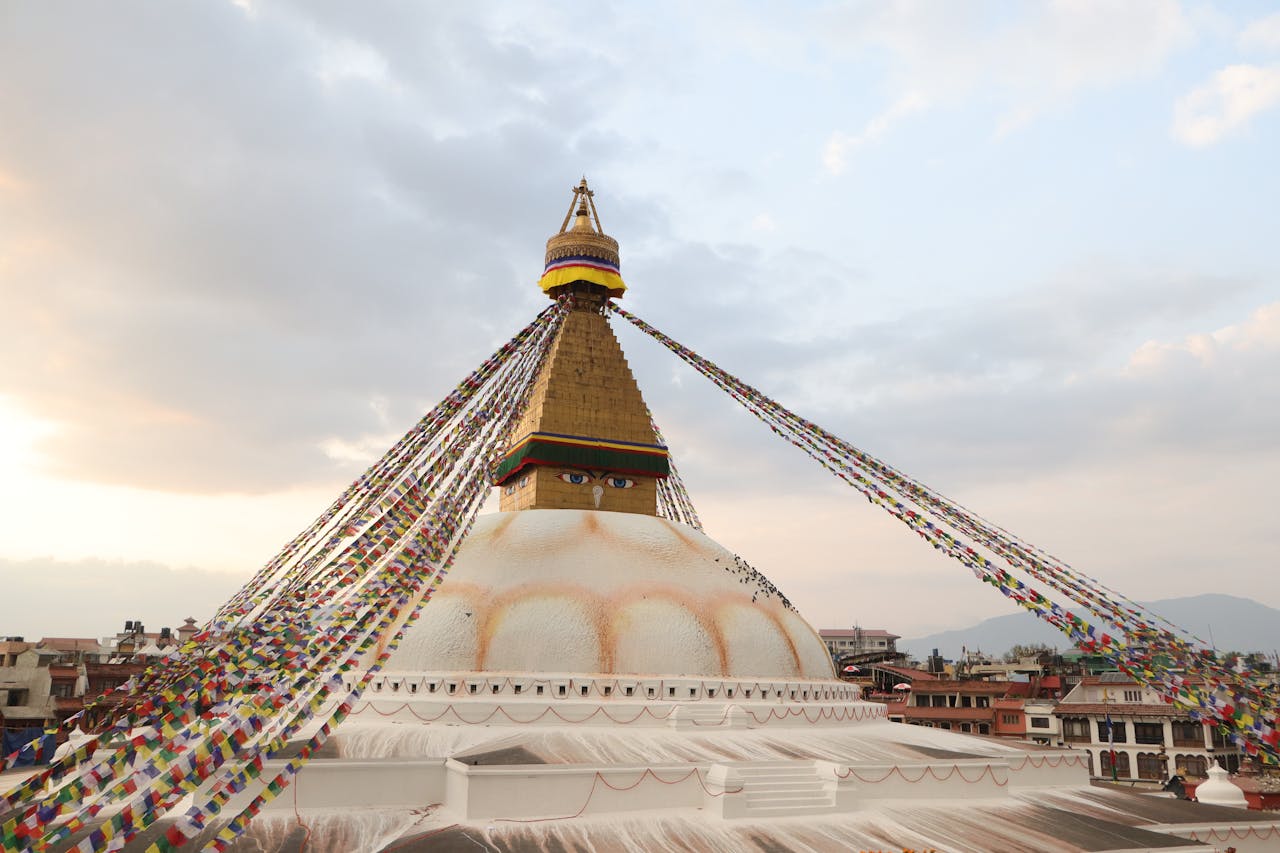Boudha Stupa, also known as Boudhanath, is one of the largest and most sacred Buddhist stupas in the world. Located in Kathmandu, Nepal, it is a UNESCO World Heritage Site and a major pilgrimage site for Buddhists.
With its massive mandala design, colorful prayer flags, and peaceful atmosphere, Boudha Stupa attracts thousands of visitors every year. Whether you’re a spiritual seeker, a history lover, or a traveler exploring Nepal, this iconic monument is a must-visit.
History of Boudha Stupa
The exact origins of Boudha Stupa are unclear, but it is believed to have been built in the 5th century after the passing of Buddha.
Over the centuries, the stupa has been renovated and expanded. Today, it stands as a symbol of peace, enlightenment, and Buddhism.
Architecture of Boudha Stupa
Boudha Stupa is an architectural marvel with deep spiritual meaning:
Dome: Represents the earth.
Square Tower: Symbolizes the eyes of Buddha, watching over the world.
13-Tier Spire: Stands for the steps to enlightenment.
Umbrella: Represents protection and wisdom.
Prayer Flags and Wheels: Believed to spread blessings with the wind.
The stupa is surrounded by monasteries, shops, and cafes, creating a vibrant spiritual hub.
Why Visit Boudha Stupa?
- Spiritual Experience: A center for meditation and Buddhist rituals.
- Cultural Richness: Witness monks chanting, butter lamp offerings, and prayer ceremonies.
- Stunning Views: The stupa looks magical at sunrise and sunset.
- Local Markets: Explore Tibetan handicrafts, thangka paintings, and souvenirs.
- Festivals: Don’t miss Losar (New Year) and Buddha Jayanti.
Best Time to Visit
Morning & Evening: Best for peaceful walks and prayers.
October to March: Pleasant weather with clear skies.
Full Moon Days: Special Buddhist ceremonies take place.
How to Reach Boudha Stupa?
From Thamel: 20-minute taxi ride
Public Transport: Local buses and microbuses are available
Entry Fee
For Foreign Tourists
Tips for Visitors
- Walk clockwise around the stupa (a Buddhist tradition).
- Respect local customs – avoid loud noises and inappropriate clothing.
- Try Tibetan butter tea, laphing and momos at nearby cafes.
- Visit early to avoid crowds.
Conclusion
Boudha Stupa is more than just a monument – it’s a living symbol of faith, peace, and Nepali culture. Whether you come for spirituality, history, or photography, this sacred site will leave a lasting impression.
Plan your visit to Boudha Stupa and immerse yourself in its divine energy!


